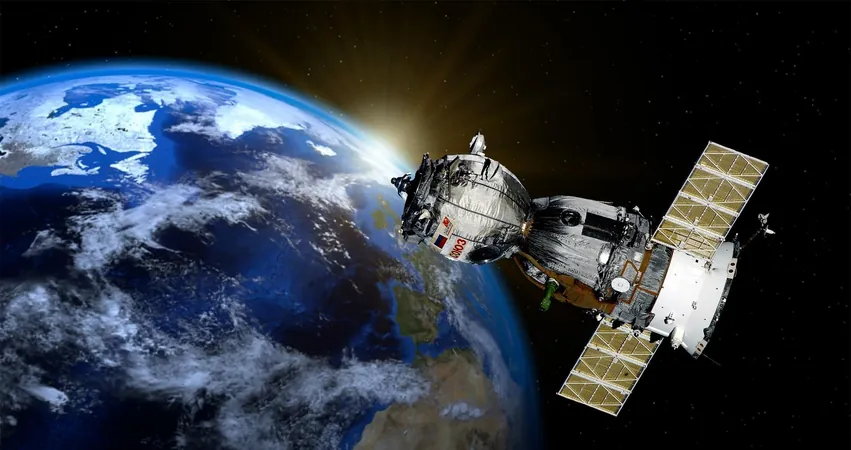
China's Astounding Satellite Recovery: Harnessing Gravity for a Stellar Comeback
2025-04-30
Author: Rajesh
In an astonishing display of engineering prowess, China has successfully rescued two satellites, DRO-A and DRO-B, after they drifted aimlessly for 123 days due to a launch failure. Thanks to a series of intricate gravitational slingshot maneuvers, what could have been a catastrophic loss turned into a remarkable success story in the realm of space navigation.
The Launch and Its Unexpected Twist
On March 15, 2024, the Long March-2C rocket launched two satellites equipped with a Yuanzheng-1S upper stage. Initially, the mission seemed successful, until a malfunction sent the satellites tumbling perilously close to Earth. With their systems damaged and power dwindling, conventional recovery approaches appeared futile.
A Critical Point of Innovation
Zhang Hao, a researcher at the Technology and Engineering Center for Space Utilization (CSU), described the tense atmosphere among the team as they confronted this dire predicament. "If the satellites were destroyed, it would have been a waste of years of effort and an immense financial loss," he stated. To combat the crisis, the team split into two divisions: one worked on stabilizing the tumbling satellites, while Zhang's crew recalibrated their trajectory using gravitational assists.
The Gravitational Genius at Work
Utilizing the gravitational forces of Earth, the Moon, and even the Sun, the engineers deftly maneuvered the satellites back to their intended distant retrograde orbit (DRO). This fuel-efficient approach was a perfect solution given the satellites’ limited resources. The most vital maneuver took just 20 minutes but was predicated on weeks of careful planning. Zhang recalled the tension building up as he monitored the operation, stating, "I became increasingly stressed as time passed. I just stared at the screen until it finally read 'normal.'"
A New Era of Space Navigation
With DRO-A and DRO-B now successfully positioned, they join the previously launched DRO-L, forming a powerful three-satellite constellation. CSU researcher Mao Xinyuan emphasized that this network would drastically cut spacecraft positioning times from days to mere hours, thus revolutionizing autonomous navigation between Earth and the Moon. This advancement is a clear demonstration of China’s burgeoning capabilities in long-distance orbital engineering and autonomous spaceflight.
A Significant Leap for Space Exploration
This triumphant recovery mission not only salvaged invaluable satellites but also represents a significant milestone in China’s efforts in space exploration. The ability to perform complex gravitational maneuvers underscores the nation's growing proficiency in orbital mechanics and space rescue operations. As these satellites integrate into the DRO constellation, they are poised to enhance future missions by improving navigation and operational efficiencies.
Ultimately, the success of this mission showcases the dedication and innovative spirit of the Chinese space team, who faced adversity head-on and triumphed. China's continuous advancements in space technologies herald a bright future filled with innovative solutions for the challenges of space exploration.


 Brasil (PT)
Brasil (PT)
 Canada (EN)
Canada (EN)
 Chile (ES)
Chile (ES)
 Česko (CS)
Česko (CS)
 대한민국 (KO)
대한민국 (KO)
 España (ES)
España (ES)
 France (FR)
France (FR)
 Hong Kong (EN)
Hong Kong (EN)
 Italia (IT)
Italia (IT)
 日本 (JA)
日本 (JA)
 Magyarország (HU)
Magyarország (HU)
 Norge (NO)
Norge (NO)
 Polska (PL)
Polska (PL)
 Schweiz (DE)
Schweiz (DE)
 Singapore (EN)
Singapore (EN)
 Sverige (SV)
Sverige (SV)
 Suomi (FI)
Suomi (FI)
 Türkiye (TR)
Türkiye (TR)
 الإمارات العربية المتحدة (AR)
الإمارات العربية المتحدة (AR)